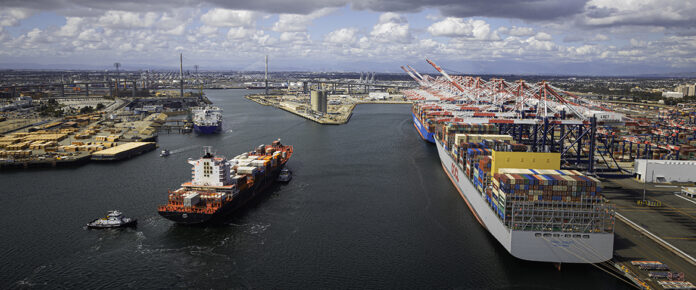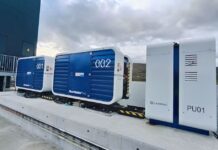
Cleaner cargo movement and stronger sustainability performance in 2024
The Port of Long Beach moved record cargo volumes in 2024 while continuing to reduce harmful emissions. A new annual emissions inventory confirms that the Port is exceeding its long-term clean air goals.
Record Cargo, Lower Emissions
The 2024 report shows strong progress since 2005. The Port cut diesel particulates by 90%, nitrogen oxides by 68%, and sulfur oxides by 98%. During the same period, container volumes rose 44%.
These results outperform the Clean Air Action Plan (CAAP) targets set for 2023, which aimed for 77% cuts in diesel particulates, 59% in nitrogen oxides, and 93% in sulfur oxides.
Year-Over-Year Changes
Some emissions increased between 2023 and 2024. Diesel soot rose 23% and nitrogen oxides 12%, while sulfur oxides dropped 2%. The main reason was record cargo throughput, 9.6 million TEUs, up 20.3% year over year.
For the first time, the Port also included dredging vessels in its inventory. This added transparency but increased reported emissions from harbor craft.
Cleaner Cargo per Container
Since the 2017 CAAP Update, the Port has achieved further progress. It reduced diesel soot by 4%, nitrogen oxides by 27%, and sulfur oxides by 21%.
Per container, emissions have fallen even more sharply: 25% for diesel particulates, 43% for nitrogen oxides, and 39%for sulfur oxides.
“Good jobs and growth don’t have to come at the cost of clean air,” said Frank Colonna, President of the Long Beach Harbor Commission. “Last year’s record volumes prove we can grow sustainably.
“Two decades ago, people said clean operations would slow us down,” added Mario Cordero, Port CEO. “Instead, we’re moving record cargo more cleanly than ever. Our goal is a zero-carbon supply chain.”
Investing in Zero Emissions
The Port is advancing “CAAP Plus”, a joint initiative with the Port of Los Angeles. The plan includes more shore power, stronger incentives for cleaner ships, and programs to speed up zero-emission truck adoption.
Over the next decade, the Port will invest $222 million in zero-emission projects and energy resilience. Efforts include expanding hydrogen fueling facilities, electrifying port equipment, and converting its fleet to zero-emission vehicles.
Currently, 21% of cargo-handling equipment runs on zero-emission power, with all six terminals expanding clean technology.
Global Collaboration
The San Pedro Bay ports are also building green shipping corridors with Shanghai and Singapore. These partnerships promote the use of low- and zero-emission fuels and help decarbonize global trade routes.
Greenhouse gases have risen 16% since 2017, but the Port remains committed to continuous progress.
A Sustainable Future
The Port of Long Beach continues to prove that economic growth and clean air can go hand in hand. With bold investments and strong collaboration, the Port is charting a clear course toward a zero-carbon future.





